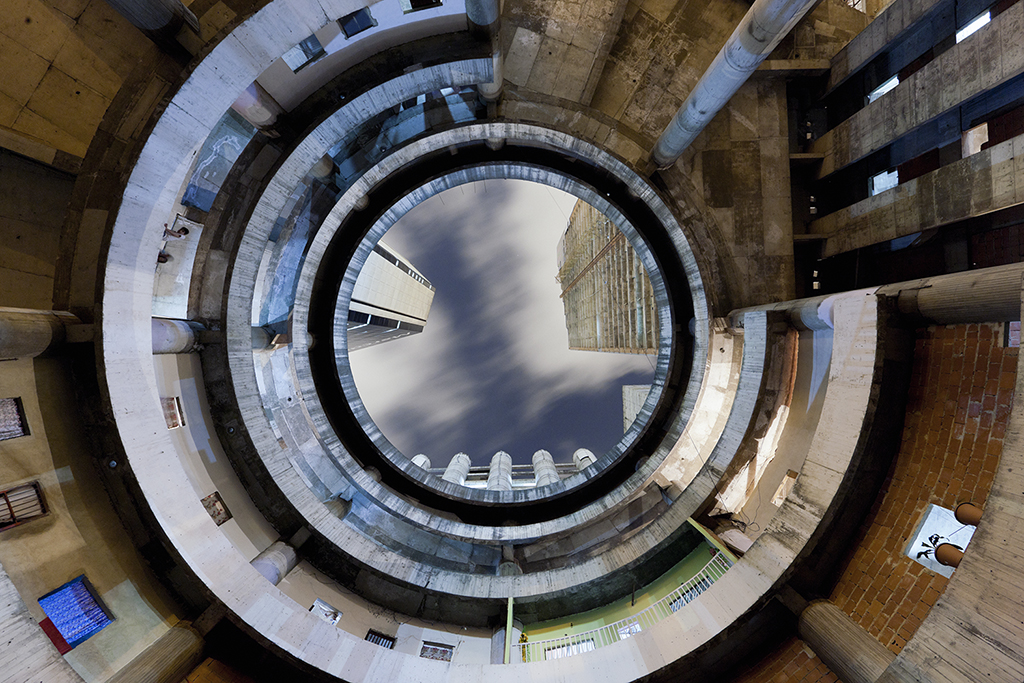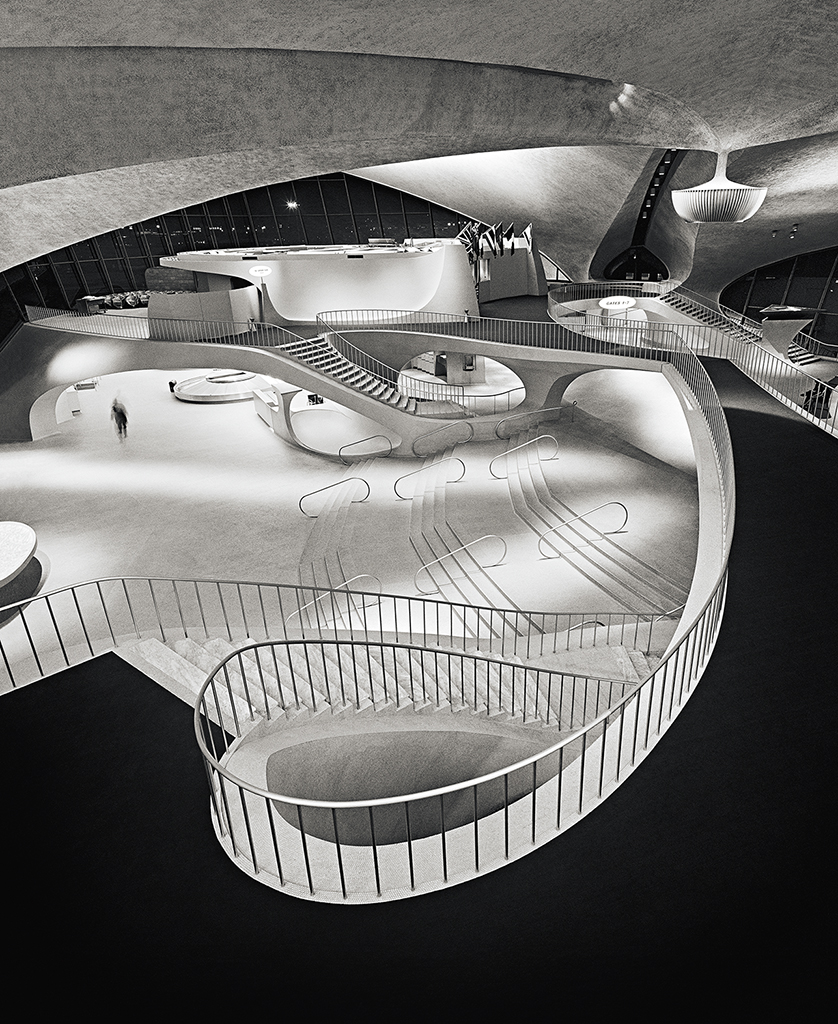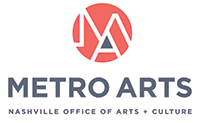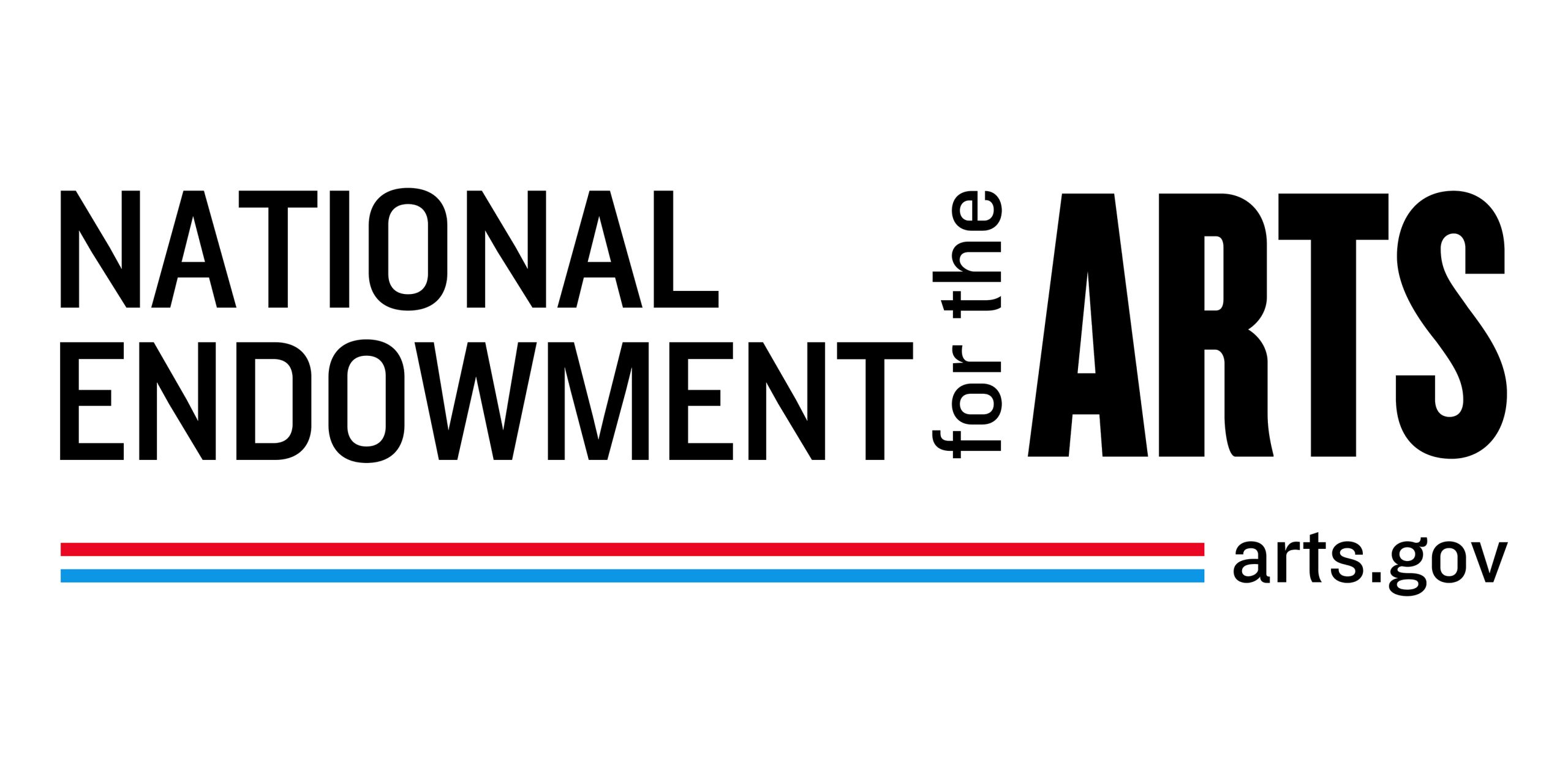Photography is not about the thing photographed. It is about how that thing looks photographed.
—Garry Winogrand
Image Building: How Photography Transforms Architecture explores the changing relationship between viewer, photographer, and architect, from the 1930s to the present. Demonstrating how photographers connect a building’s identity with the people who reside in, work in, visit, or simply look at it, the exhibition also reveals how this understanding may be layered, reinforced, or in some instances radically reinterpreted.
Buildings and the way they are photographed are visible symbols of a society’s desires and the social, economic, and aesthetic concerns of an era. Photographers choose between black-and-white and color, sharp contrast and soft focus, and straightforward and dramatic framing to record their subjects. Contemporary photographers add the use of new digital technologies, allowing for an even greater manipulation of an image. Whatever the medium, the intent is to involve the viewer in understanding the symbolism of architecture and public spaces. By combining different contexts and frames of meaning, Image Building invites viewers to actively experience structures and spaces in novel and expanded ways.
Many architects hope that their conceptual intentions will last as long as the actual structures. Creating a perception—a mental or actual image of a structure—has become a vital element to architectural practice, shaping architects’ ideas about how buildings will look in addition to how they are experienced. But the messages contained in architecture are filtered and even altered by the lenses of a changing society. This exhibition presents fascinating photographic conversations between architect and artist, past and present, and facts, dreams, and illusions.
Image Building features work by contemporary photographers including Iwan Baan, Lewis Baltz, Andreas Gursky, Candida Höfer, Thomas Ruff, Stephen Shore, and Hiroshi Sugimoto, and earlier modernist architectural photographers like Berenice Abbott, Samuel Gottscho, Julius Shulman, and Ezra Stoller.
Non-flash photography by the public for non-commercial, personal use is allowed in this exhibition.
We gratefully acknowledge the support of our Picasso Circle members.
This exhibition was organized by Therese Lichtenstein for the Parrish Art Museum, Water Mill, New York.
Image Building is made possible, in part, by the generous support of the Century Arts Foundation, The Mr. and Mrs. Raymond J. Horowitz Fund for Publications, The Robert Mapplethorpe Foundation, Joseph M. Cohen, Sandy and Stephen Perlbinder, and Lee H. Skolnick Architecture + Design Partnership. Public funding provided by Suffolk County.
Exhibition gallery

Thomas Struth (German, b. 1954). Pergamon Museum I, Berlin, 2001. Chromogenic print, 80 1/2 x 100 5/8 in. Dallas Museum of Art, Contemporary Art Fund: Gift of Arlene and John Dayton, Mr. and Mrs. Vernon E. Faulconer, Mr. and Mrs. Bryant M. Hanley, Jr., Marguerite and Robert K. Hoffman, Cindy and Howard Rachofsky, Deedie and Rusty Rose, Gayle and Paul Stoffel, and three anonymous doners, 2002.46. Image courtesy the artist. © 2018 Thomas Struth






